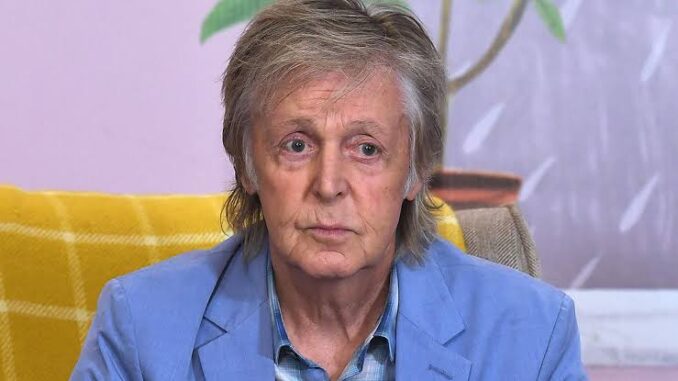
Paul McCartney Gifts Historic Countryside Estate to Daughter Beatrice as a Living Legacy of Peace, Creativity, and Preservation
In a world often preoccupied with wealth, celebrity, and constant noise, one of the most recognizable figures in music history has chosen silence, nature, and legacy as the true inheritance for his youngest daughter. Sir Paul McCartney, beloved across generations as one of the founding members of The Beatles, has quietly made a gesture that is both profoundly personal and globally symbolic. On a sunny July afternoon, the world learned that Paul had gifted a historic English estate to his daughter Beatrice McCartney, turning private land into a living legacy of peace, creativity, and preservation.
The estate, tucked away in the rolling countryside of East Sussex, has long held quiet significance for McCartney. Once used as a private writing retreat in the early 1970s, it served as a sanctuary from the public eye during a time of personal transformation. While the world debated the future of The Beatles, Paul found refuge in the stillness of these trees, walking the woodland paths and writing by candlelight in a stone cottage that remains untouched to this day. Now, over fifty years later, the estate has been entrusted to Beatrice Milly McCartney, the daughter he shares with Heather Mills.
Beatrice, now in her early twenties, has remained largely out of the spotlight throughout her life. Her interests have taken her in a direction far from music and media. A student of environmental science and aspiring marine biologist, she has long expressed a desire to live quietly, to work with purpose, and to preserve the natural world rather than perform for it. Paul, deeply aware of her nature, said this gift was never about land or luxury. It was about giving her a place to be herself.
In a handwritten letter made public with Beatrice’s permission, Paul wrote, “This is where I came when I needed to think, to breathe, and to be more than a musician. It gave me peace when the world was loud. I hope it does the same for you.” Alongside the letter, he enclosed a single key to the cottage and a note that read, “Don’t change a thing. Just add your voice to it.”
Although the estate will remain primarily private, Beatrice has expressed her intention to open a portion of the land seasonally to environmental research and quiet artist residencies. A new trail, named Milly’s Path in honor of her middle name and her late grandmother, will offer access to a preserved wildflower meadow, a series of ponds, and a writing cabin once used by Paul and Linda McCartney. The land has been legally protected under a conservation trust, ensuring it will never be developed or sold. In Beatrice’s own words, “I want this place to remain what it is — a refuge for thought and a home for the natural world.”
Public response to the gesture has been overwhelmingly positive. Fans from around the world have praised Paul for setting an example not rooted in fame or extravagance, but in thoughtfulness and legacy. Environmental organizations have applauded the legal protection of the land, and many have pointed to the act as a symbol of generational stewardship. Paul’s quiet gesture stands in contrast to the celebrity culture of excess. It shows how true impact comes not from grandeur but from intention.
In this act, McCartney has offered more than an estate. He has offered a philosophy: that we pass on the best parts of ourselves not through applause or achievements, but through spaces that hold memory, meaning, and care. For Beatrice, it is a gift of freedom. For the world, it is a reminder that even the loudest voices can find power in silence.
And for Paul, it may be his most beautiful composition yet — written not in lyrics, but in trees, sunlight, and legacy.